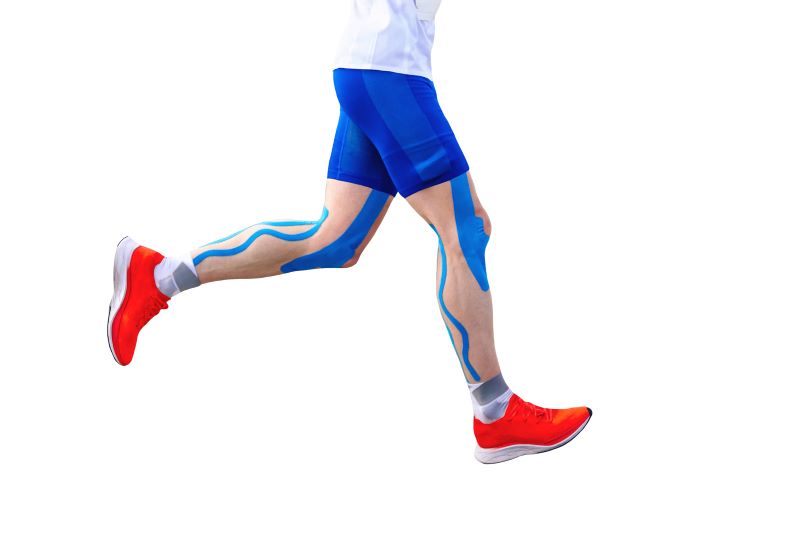Cycling vs Walking: Which One to Include in Your Daily Routine?

Engaging in aerobic exercises is essential for maintaining overall health and wellness. Two of the most accessible and effective aerobic activities you can incorporate into your daily routine are walking and cycling. These exercises are great for keeping fit and contribute to better heart health and digestive function.
Still, wondering which is the best exercise among the two? Stick to the article to explore the differences between cycling and walking and discover which suits you best.

Table of Contents

Differences Between Cycling and Walking
There can be many differences between cycling and walking concerning the muscles involved, the duration up to which you will be comfortable performing it, etc. Also, there are other factors involved. For example, if you are overweight, you may feel more comfortable riding first until you lose weight and start walking.
To better understand cycling or walking, which is better, let’s look at its differences in depth:
Which Muscles are Involved in Cycling and Walking?

Both cycling and walking engage multiple muscle groups, enhancing overall strength, endurance, and flexibility. Different muscles involved in both activities include:
- Quadriceps: These major thigh muscles are stressed in both activities. Cycling activates them during the downstroke of the pedals while walking, and they are used to straighten the knee and move forward.
- Hamstrings: The hamstrings are located at the back of your thighs and assist in both exercises. They help with upstrokes of pedals in cycling, bending knees and controlling leg movements when walking.
- Glutes: Your buttock muscles are engaged in both cycling and walking. They provide force for stability in cycling, extend the hip, and move the leg backwards when you walk.
- Calves: The calf muscles, especially the gastrocnemius and soleus, are crucial for both activities. They stabilise the ankles and provide push-off power in cycling and walking. Also, it provides a strong base to work against for forward-moving feet.
- Hip Flexors: During these activities, the hip flexors raise the feet from the ground surface. In this case, such flexors get involved by going up on cycle pedals or taking each step forward during long walks.
- Core Muscles: Abdominal and lower back muscles provide support to keep your body steady while doing any of this exercise. Being on a bike or walking requires good balance and posture due to their involvement.
- Upper Body Muscles: The arms, shoulders, and upper back muscles support both activities. In cycling, they control the handlebars, and in walking, they swing naturally to aid balance.
Which is Better, Cycling or Walking?
The above table explains the different parameters of cycling versus walking, which should give you an idea of which exercise is better for you. However, you may still wonder how to choose between these exercises.
While both are low-impact aerobic exercises and excellent workouts, you can choose by trying both at least once. It will give you a definite answer to which one is more comfortable and enjoyable. For this purpose, you do not have to buy a bike. You can rent or borrow one if you don’t have one.
However, for a comparison between the two, let’s look at some parameters:
Benefits of Cycling
Cycling is a healthy, low-impact aerobic exercise that is safe for people of all ages, from adolescents to the elderly. It is also cheap and does not harm the environment. By cycling daily, you work on your lungs, blood vessels, and heart, improving their function.
This is why you sweat, breathe deeper, and experience increased body temperature while cycling. As a result, you can reap the following benefits:
Decrease in stress level
Improvement in joint mobility
Strengthening of muscle and higher flexibility
Better cardiovascular health
Strengthening of bones
Reduction in depression and anxiety
Decrease in body fat levels
Benefits of Walking
Undeniably, walking is one of the greatest and easiest ways to maintain your overall health. No special equipment or training is required. Just 30 minutes of walking can strengthen your muscles. You do not have to indulge in vigorous physical activity to maintain your health.
A 2007 study found that even 75 minutes of walking per week significantly improves fitness compared to being inactive. Moreover, since walking is a low-level exercise, anyone can perform it without risking hurting themselves. Some benefits associated with it include:
Increase in muscle strength
Reduction in the risk of experiencing heart stroke or other diseases
Improvement in balance
Better heart and lung health
Stronger bones
Reduction in body fat
Less risk of developing chronic diseases like type 2 diabetes, cancer, high blood pressure, etc.
Is it Safe to Indulge in Both Cycling and Walking?
While the wisest choice will be to perform either cycling or walking, it all depends on your discretion. It does not harm your body. However, keep a tab on your calorie intake. This means you can cycle, walk, or do both simultaneously. Also, doing both adds variety to your routine and increases your chances of sticking with the progra
If picking one of the exercises, cycling can benefit people with less time to exercise and enjoy a faster pace. Walking is for those who experience back pain. It can also be perfect for people with bone density issues and who have limited funds to buy or rent a bike.
Also, if you have any serious conditions, such as heart problems, arthritis, etc., consider getting medical help first and then ask your doctor if you can go cycling or walking. These serious problems require treatment, and hence, you must keep health insurance for yourself to cover the cost of such treatment.
How Much Cycling and Walking is Suitable for a Week?
According to research, individuals must aim to burn at least 2000 calories a week by exercising. However, when you cycle for one hour, you can burn only 300 calories/hour. So, to achieve the quantum, you may have to cycle twice a day.
The US DHS, WHO, and experts advise adults aged 18 to 64 to complete at least 150 minutes of physical activity weekly for optimal health. Aim for 30 minutes of daily exercise over 5 days to achieve this.
Consult a health expert or dietician if needed. While walking is equipment-free and preferred by many, cycling is enjoyed by others for its flexibility and convenience. Try both activities before deciding.
Who Should Avoid Cycling or Walking?
Both cycling and walking are generally safe for most people, but certain individuals may need to avoid these activities due to specific health conditions or concerns, including:
- Joint Issues: People with severe joint pain or arthritis may find high-impact activities like cycling uncomfortable. Walking might be better, but always choose flat surfaces to reduce strain.
- Balance Problems: Those with balance issues or a history of falls should be cautious when cycling, especially on busy roads or uneven terrain. Walking on flat surfaces or using a treadmill can be safer alternatives.
- Heart Conditions: Individuals with severe heart conditions or a history of heart attacks should consult their healthcare provider before starting any exercise regimen. Walking is generally safer, while cycling may require medical clearance.
- Respiratory Problems: People with severe respiratory conditions like asthma or COPD may struggle with strenuous activities such as cycling. Walking at a moderate pace in well-ventilated areas can be more manageable.
- Pregnant Women: They should consult their healthcare provider before starting any new exercise routine. While both activities are usually safe, walking may be more comfortable as pregnancy progresses.
- Recent Surgery or Injury: Those recovering from recent surgery or injury, particularly involving the lower body, should avoid high-impact activities like cycling until they receive medical clearance. Walking can be a safer option during recovery.
Myths vs Facts about Cycling
Many myths about cycling can mislead people. Here are some common misconceptions with the facts:
Myths vs Facts about Walking
Walking is a simple and effective form of exercise, but several myths can cause confusion and here are some of them:














